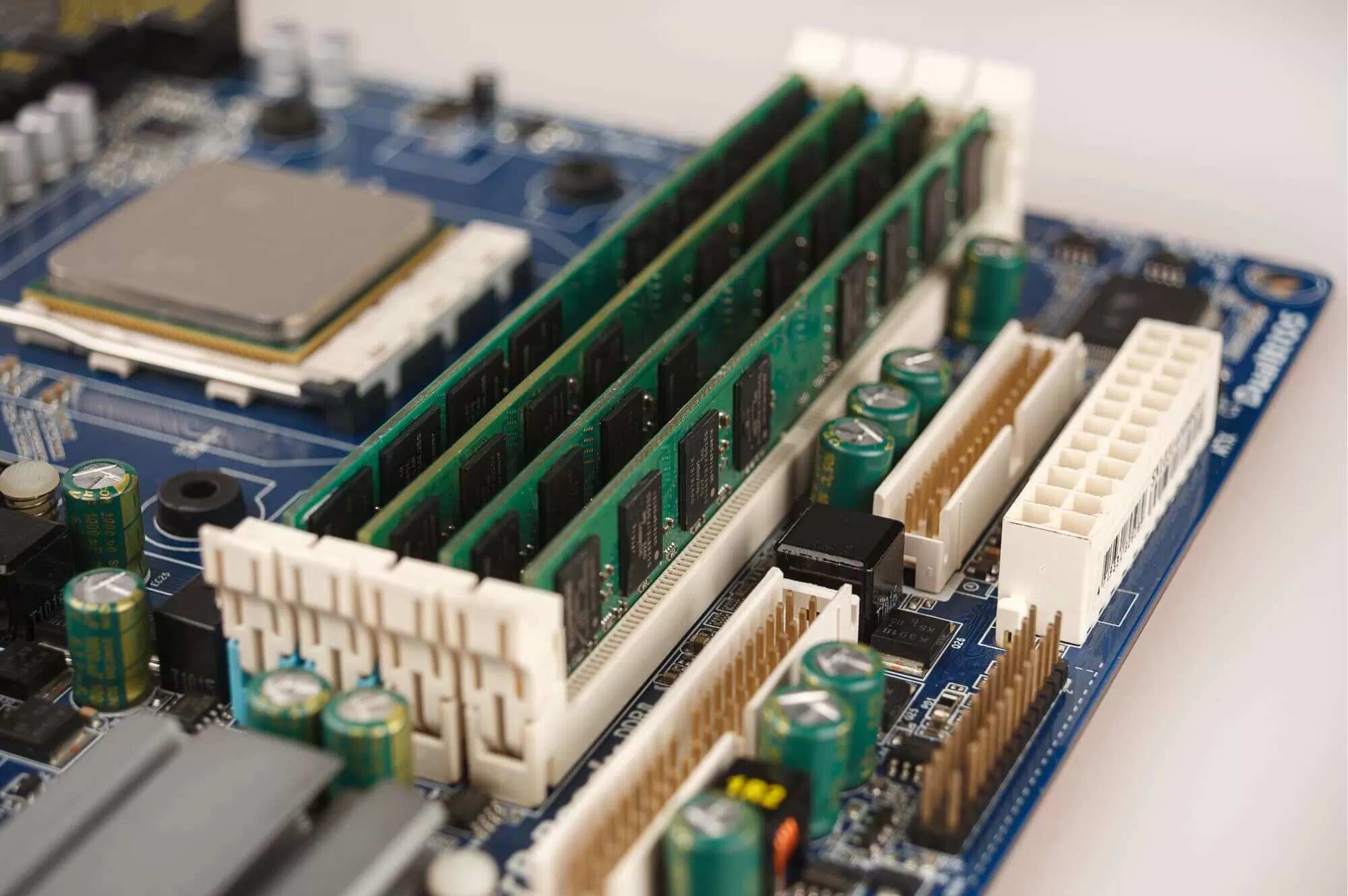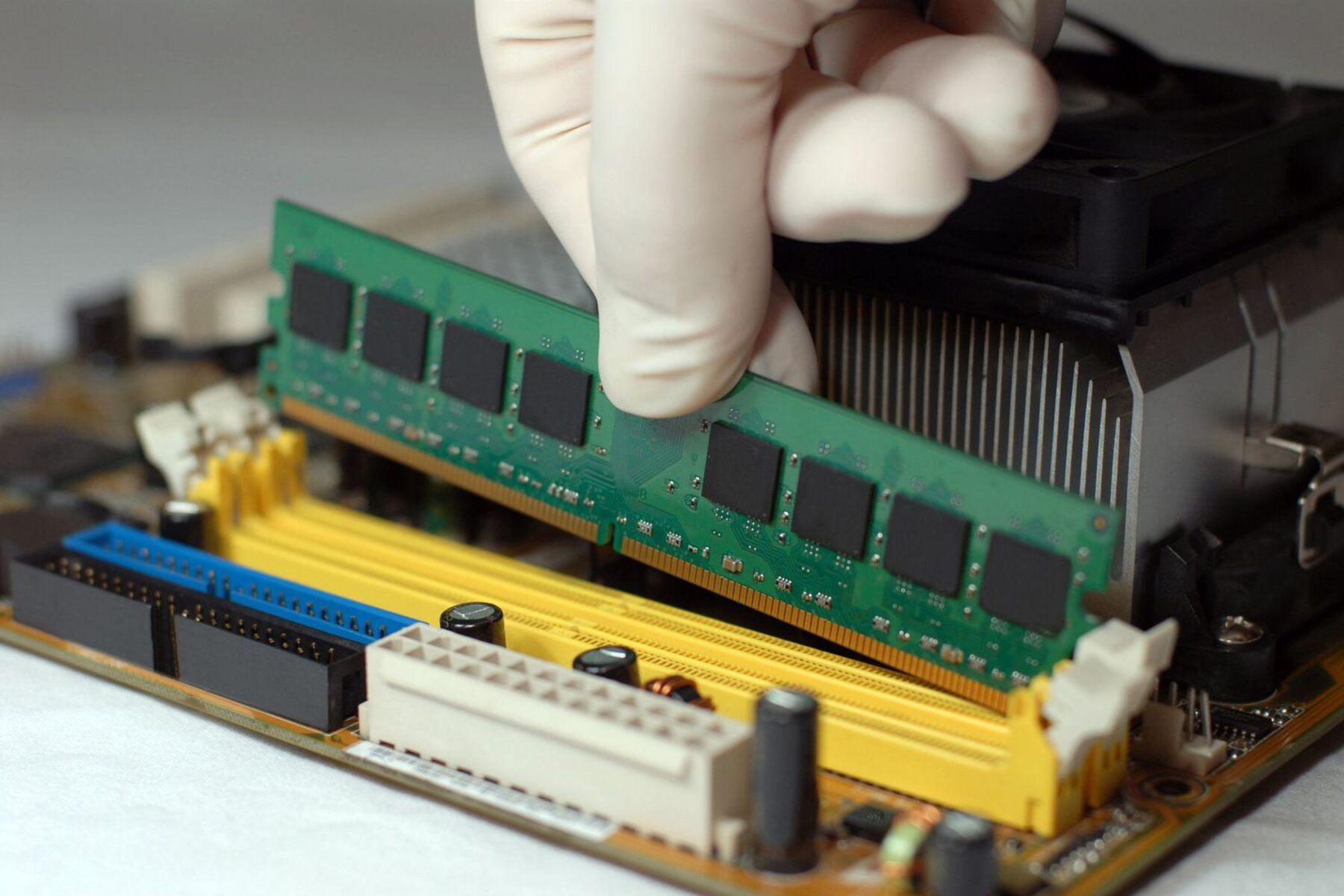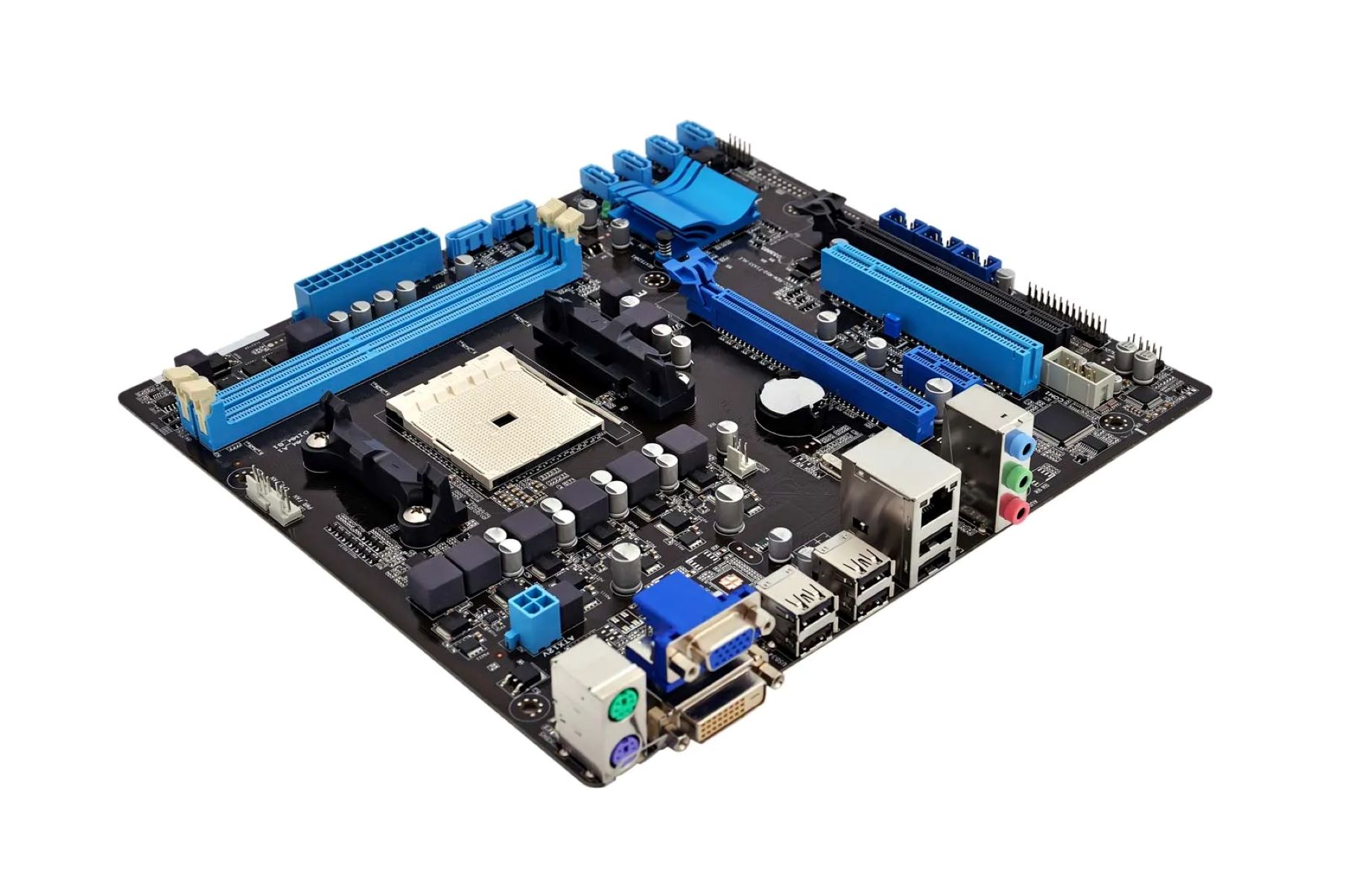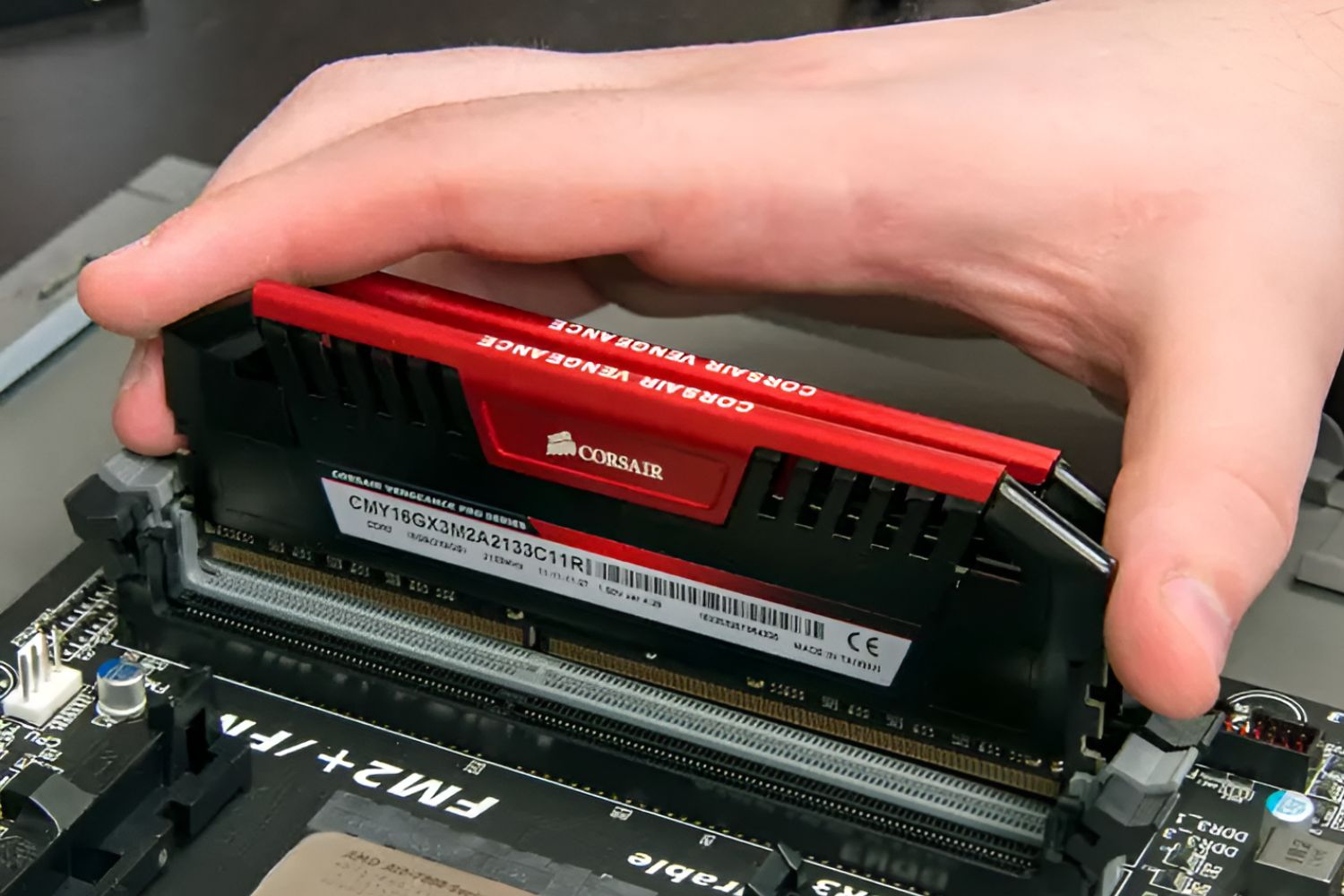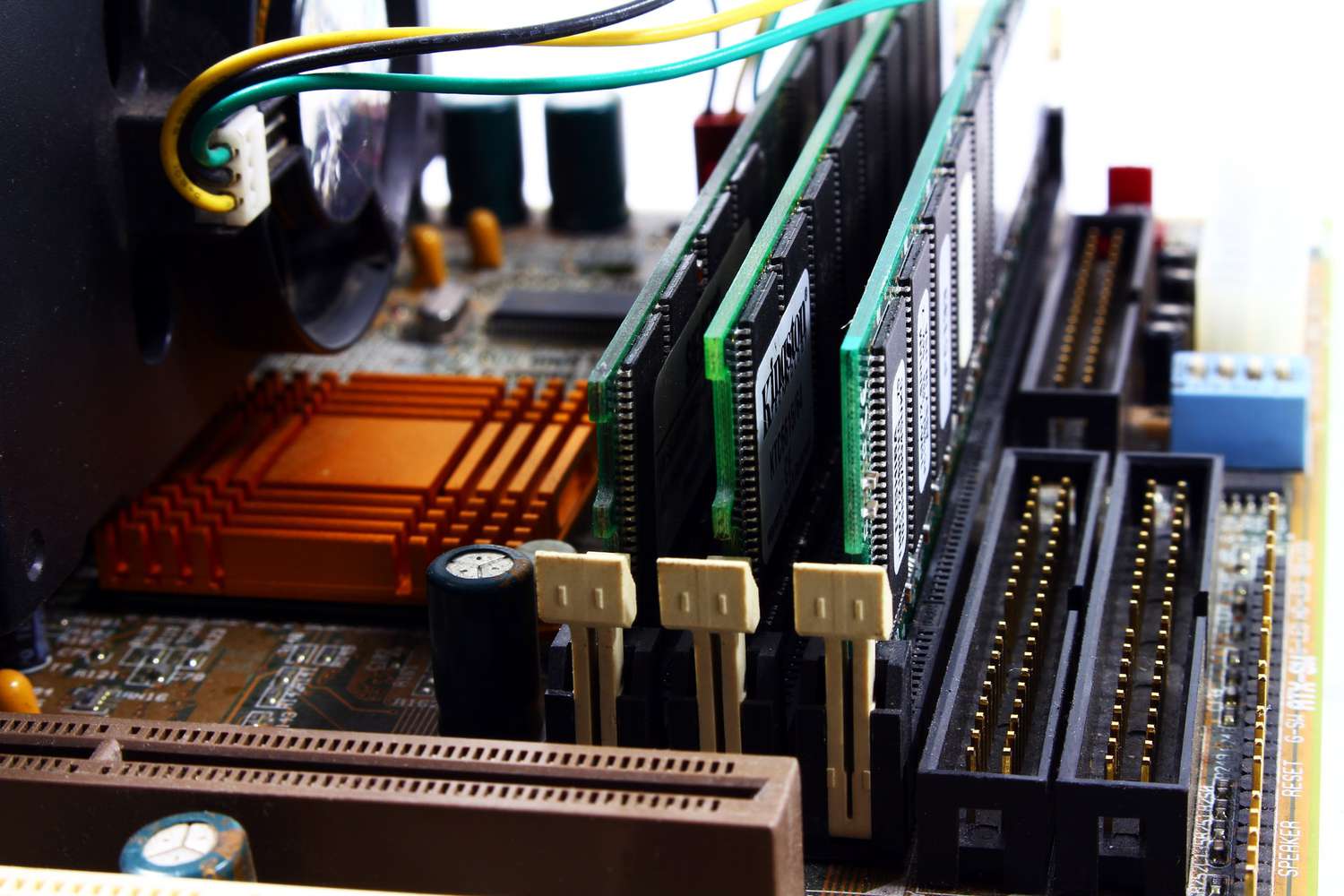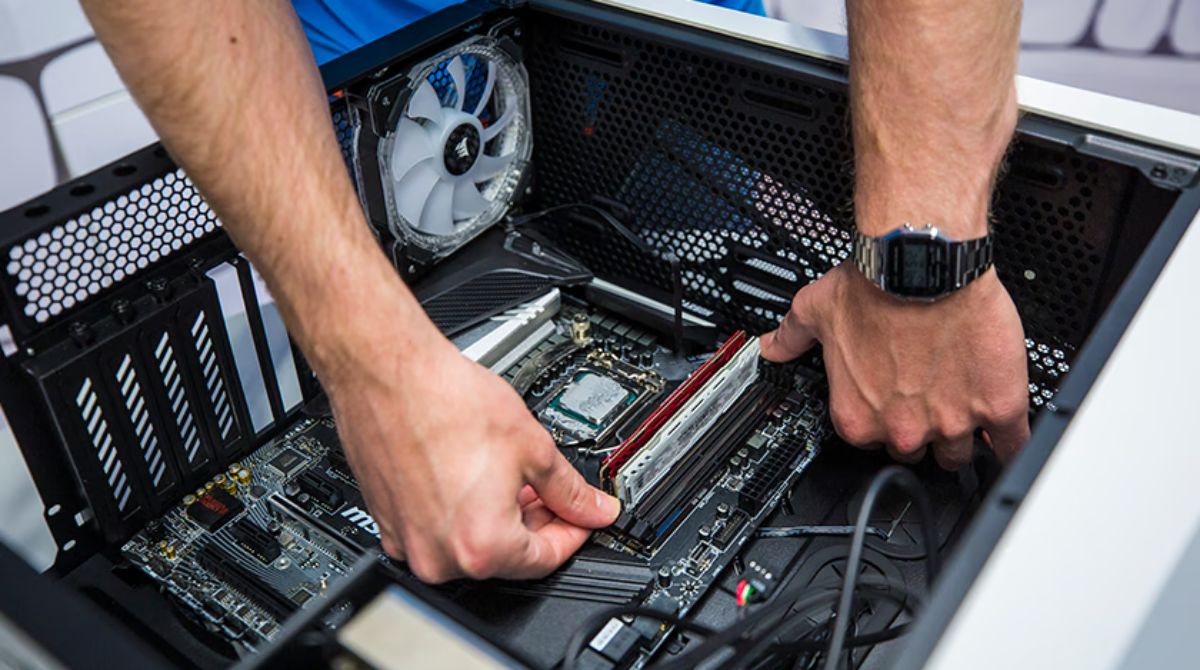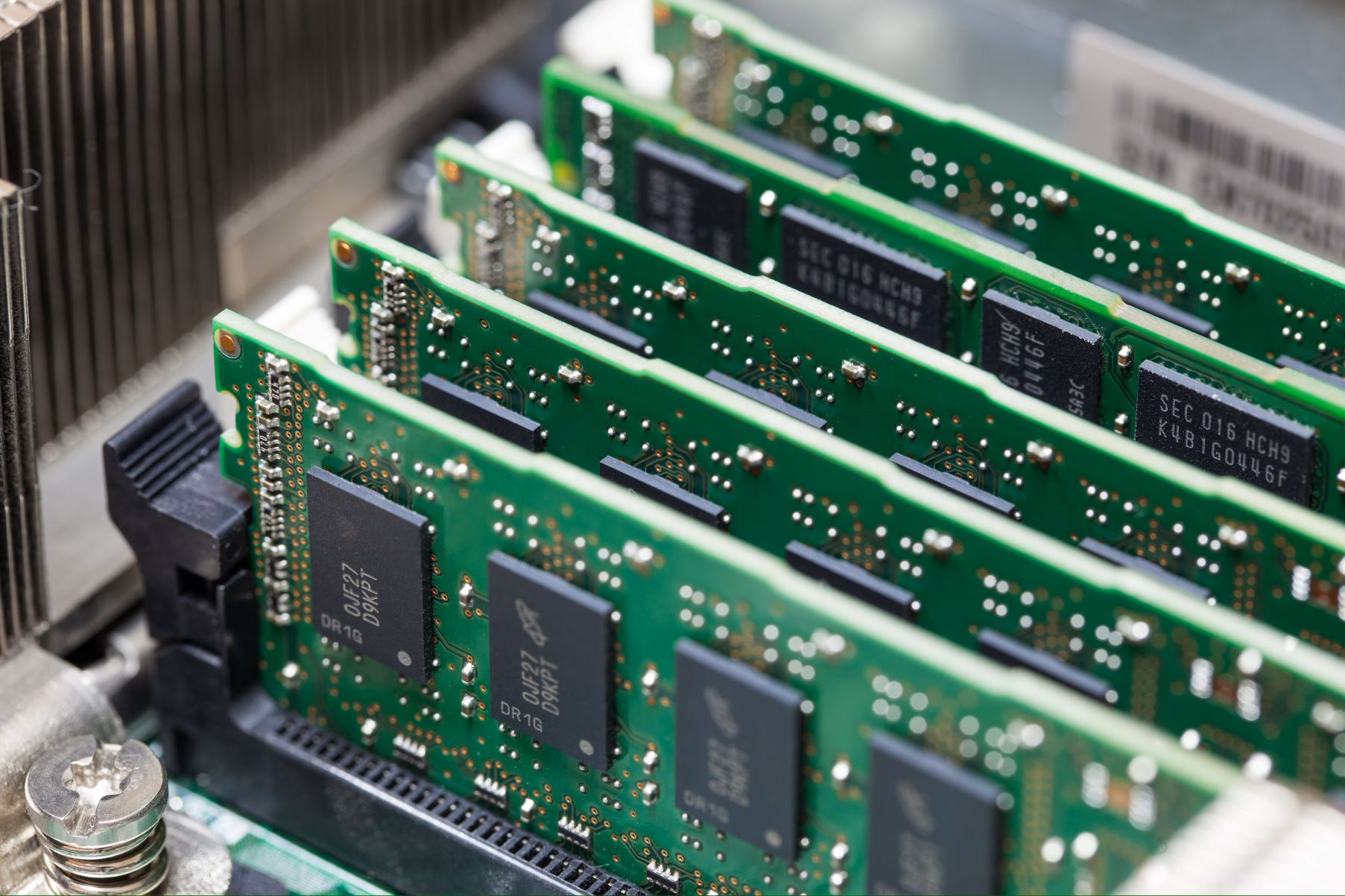Introduction
Welcome to the world of computers and their intricate components! One of the key elements that play a crucial role in the performance of a computer is RAM, or Random Access Memory. RAM is responsible for temporarily storing data that the computer’s processor can quickly access, enabling it to perform tasks efficiently. Understanding the location of RAM slots is essential for upgrading and troubleshooting RAM-related issues.
RAM serves as a temporary storage space for data that is actively being used by the computer. It allows the processor to quickly retrieve and manipulate data, resulting in a faster and more responsive system. Without sufficient RAM, a computer may experience sluggishness, lag, or even crashes when running resource-intensive applications. Upgrading or adding more RAM can significantly improve a computer’s performance, making it an important consideration for avid gamers, designers, and heavy multitaskers.
There are different types of RAM available in the market, including DDR, DDR2, DDR3, and DDR4. Each successive generation offers increased speed and efficiency. The type of RAM used in a computer depends on the motherboard’s compatibility and the computer’s requirements.
Now let’s dive into the main topic: the location of RAM slots. RAM slots are physical connectors located on the motherboard, and they are specifically designed to hold and connect the RAM modules. The number of RAM slots and their location can vary depending on the motherboard model, so it’s essential to refer to the motherboard’s manual for specific information.
Overview of RAM
Random Access Memory, commonly known as RAM, is a crucial component of a computer that plays a fundamental role in its performance. Unlike the long-term storage of data on the hard drive or solid-state drive, RAM provides temporary storage that allows the computer’s processor to quickly access and manipulate data that is actively being used.
RAM is designed to store data in a way that enables rapid retrieval and modification. It acts as a bridge between the computer’s processor and the storage devices, facilitating the transfer of data back and forth. When you open an application or a file, it gets loaded into RAM, enabling the processor to access and process the data more efficiently.
The size of RAM determines how much data your computer can handle at a given time. The more RAM you have, the more data your computer can store and access without needing to rely heavily on virtual memory (which is significantly slower). This directly affects the computer’s overall performance, especially when it comes to multitasking or running memory-intensive applications like video editing software or complex games.
RAM operates at a much faster speed than traditional storage devices like hard drives, which makes it the primary choice for storing and retrieving data that needs to be accessed frequently. Additionally, RAM is volatile memory, meaning that its contents are lost once the computer is powered off. Therefore, it’s important to save your work regularly to prevent any data loss.
In recent years, there have been advancements in RAM technology, with each new generation offering increased speed and capacity. The most common types of RAM used today include DDR3 (Double Data Rate 3) and DDR4 (Double Data Rate 4). DDR4 is the latest standard and offers higher speeds and improved power efficiency compared to its predecessors.
Overall, RAM is a vital component that directly impacts the performance of your computer. Understanding its role and how it works will help you make informed decisions when it comes to upgrading or troubleshooting RAM-related issues.
Why RAM is Important
RAM, or Random Access Memory, is crucial to the overall performance and functionality of a computer. It plays a vital role in providing the necessary resources for the computer’s processor to quickly access and manipulate data. Here are some key reasons why RAM is important:
- Speed and Responsiveness: RAM allows for faster data access and manipulation, resulting in a more responsive system. With sufficient RAM, your computer can quickly load and run applications, switch between tasks seamlessly, and handle multiple processes simultaneously.
- Improved Multitasking: RAM enables you to run multiple applications and processes simultaneously without experiencing sluggishness or slowdowns. With more RAM, you can have several web browsers, design tools, and multimedia applications open without compromising performance.
- Increased Efficiency: RAM reduces the reliance on virtual memory, which is stored on the hard drive or SSD. Virtual memory is significantly slower than RAM, so having more RAM allows the computer to store and access data quickly, improving overall efficiency.
- Enhanced Gaming Experience: Gamers often require large amounts of RAM to run complex and graphics-intensive games smoothly. With ample RAM, game assets can be loaded into memory, reducing loading times and enhancing gameplay.
- Efficient Data Handling: RAM allows the processor to quickly retrieve, modify, and store data. This is particularly important when working with large files, such as video editing or rendering projects, as RAM provides the temporary space needed for efficient data handling.
- Future-Proofing: As technology advances and software becomes more demanding, having sufficient RAM ensures that your computer can meet future requirements. Upgrading RAM is often a cost-effective way to extend the lifespan and usability of your computer.
In summary, RAM is a critical component that affects the speed, responsiveness, and overall performance of your computer. By providing the necessary resources for quick data access and manipulation, RAM enhances multitasking capabilities, improves efficiency, and provides a better user experience, whether you’re a casual user, professional, or gamer.
Types of RAM
There are several types of RAM (Random Access Memory) available in the market, each with its own specifications and compatibility requirements. Here are the most common types of RAM:
- DDR (Double Data Rate): DDR is an acronym for Double Data Rate. It is one of the oldest types of RAM and has undergone several iterations, including DDR2, DDR3, and DDR4. DDR RAM offers faster data transfer rates compared to its predecessor, SDR (Single Data Rate) RAM. The subsequent generations of DDR RAM provide increased speed, lower power consumption, and improved overall performance.
- DDR2 (Double Data Rate 2): DDR2 RAM was an improvement over DDR, offering higher bandwidth and faster data transfer rates. It operates at a higher clock speed and is backward compatible with DDR RAM slots, although it cannot be used interchangeably.
- DDR3 (Double Data Rate 3): DDR3 RAM improved upon DDR2 by introducing higher clock speeds, increased data transfer rates, and lower power consumption. It offers better performance and efficiency compared to its predecessors.
- DDR4 (Double Data Rate 4): DDR4 RAM is the latest standard in memory technology. It provides even higher speeds, improved power efficiency, and higher capacities than DDR3. DDR4 RAM modules are not compatible with DDR3 slots due to changes in physical and electrical specifications.
It’s important to note that the type of RAM you choose must be compatible with your computer’s motherboard. Before purchasing RAM, consult your motherboard’s manual or manufacturer’s website to determine the supported RAM types and maximum capacities.
In addition to these primary types, there are other specialty RAM types available in specific scenarios, such as ECC (Error Correcting Code) RAM, which offers improved reliability and error correction capabilities but is primarily used in enterprise-level systems, servers, and workstations.
When selecting RAM for your computer, consider factors such as the motherboard compatibility, the maximum supported RAM capacity, the required speed, and the specific needs of your computing tasks. Choosing the right type and capacity of RAM will ensure optimal performance and allow your computer to handle intensive applications and multitasking efficiently.
Where Are the Slots Located?
To install or upgrade RAM in your computer, you need to locate the RAM slots. These slots are physical connectors on the motherboard specifically designed to hold and connect the RAM modules. The exact location of the RAM slots can vary depending on the motherboard model, but they are typically found near the CPU socket or CPU cooler.
In desktop computers, the RAM slots are usually located in close proximity to the CPU socket. This placement allows for a shorter path between the CPU and RAM, resulting in improved data transfer speeds. Most desktop motherboards have multiple RAM slots, typically ranging from two to four. The slots are usually aligned horizontally or vertically, and they may be color-coded or labeled to indicate their specific configuration or limitations.
For laptop computers, the RAM slots are often located on the underside of the device or beneath a removable panel on the bottom. However, the accessibility and upgradability of RAM in laptops can vary significantly depending on the make and model. Some laptops have soldered RAM modules that cannot be upgraded, while others have one or two accessible slots for user upgrades.
In addition to desktop and laptop computers, other devices such as servers and high-end workstations also have RAM slots. The location of these slots can vary depending on the specific design and configuration of the device. It’s essential to refer to the device’s manual or manufacturer’s documentation to find the exact location of the RAM slots.
When locating the RAM slots, ensure that your computer is powered off and disconnected from any power sources. Opening the computer case, removing panels, or accessing the underside of a laptop may be required to reach the RAM slots. Take proper precautions to avoid static electricity damage by grounding yourself before handling the RAM modules.
Overall, the location of RAM slots may differ depending on the type and model of the device. Consult the device’s manual or manufacturer’s documentation for specific instructions on locating and accessing the RAM slots for installation or upgrade purposes.
Types of RAM Slots
RAM slots, also known as memory slots or DIMM slots, are the physical connectors on a motherboard where you install your RAM modules. The type of RAM slots can vary depending on the motherboard’s design and architecture. Here are the most common types of RAM slots:
- DDR DIMM Slots: DDR (Double Data Rate) DIMM slots are designed for DDR RAM modules. These slots have a varying number of pins and are typically labeled as DDR, DDR2, DDR3, or DDR4 compatible. The number of pins and the physical design of DDR DIMM slots differ between each generation of DDR RAM. DDR4 DIMM slots, for example, have 288 pins and a slightly different arrangement compared to older versions.
- SO-DIMM Slots: SO-DIMM (Small Outline Dual Inline Memory Module) slots are used for smaller form factor devices such as laptops, compact desktops, and some mini-PCs. SO-DIMM slots are shorter and usually have 204 pins (for DDR3 and DDR4) or 200 pins (for DDR2), and they are not compatible with standard DIMM slots.
- ECC DIMM Slots: ECC (Error Correcting Code) DIMM slots are reserved for special types of RAM that provide error correction capabilities. These slots are often found in server motherboards or high-end workstation boards where data integrity is critical.
It’s important to note that RAM modules are not cross-compatible with different types of RAM slots. For example, DDR3 RAM modules cannot be installed in DDR4 slots. Additionally, the number of slots available on a motherboard can vary. Commonly, consumer-grade desktop motherboards have two to four slots, while server or workstation motherboards can have more slots to support higher memory capacities.
The layout and color-coding of RAM slots can also vary between motherboard manufacturers. Some motherboards color-code the slots to indicate specific configurations or to assist in dual-channel or quad-channel memory setups. The motherboard’s manual provides detailed information on which slots to use for specific memory configurations and any limitations or recommendations from the manufacturer.
When installing or upgrading RAM modules, it’s crucial to follow the guidelines provided by the motherboard manufacturer. Ensure that the modules are securely inserted into the correct slots based on the memory configuration you intend to use. Improper installation or using incompatible modules can result in system instability or failure to boot.
In summary, there are different types of RAM slots, including DDR DIMM slots, SO-DIMM slots, and ECC DIMM slots. Understanding the type of RAM slots your motherboard supports is essential for selecting compatible RAM modules and properly installing or upgrading your computer’s memory.
How to Find RAM Slots on Different Devices
Finding RAM slots on different devices, such as desktop computers, laptops, and servers, may require different approaches. Here are some general guidelines to help you locate the RAM slots on various devices:
- Desktop Computers: In most desktop computers, the RAM slots are located on the motherboard. To find them, you will need to open the computer case. Once you have removed the side panel, visually inspect the motherboard for the RAM slots. They are usually located near the CPU socket or CPU cooler. Refer to the motherboard’s manual for specific instructions and any color coding or labeling of the slots.
- Laptops: Locating the RAM slots on laptops can be more challenging as they are often hidden beneath a removable panel or on the underside of the device. Consult the laptop’s manual or manufacturer’s documentation to find the proper location and method to access the RAM slots. In some cases, you may need to remove screws or slide a latch to uncover the slots.
- Servers: Servers typically have a different form factor and layout compared to desktop computers. The RAM slots are usually located on the motherboard inside the server chassis. Consulting the server’s manual or contacting the manufacturer for specific instructions on locating the RAM slots is recommended.
No matter the device, it is crucial to handle RAM and the device itself with care. Before opening any device, power it off and disconnect it from any power source. Take precautions to avoid static electricity buildup by grounding yourself before handling the RAM modules.
Additionally, the motherboard’s manual, laptop documentation, or manufacturer’s website should provide vital information on the number of RAM slots available, the supported RAM types, and any limitations regarding memory configuration and capacities. This information is important to ensure compatibility and optimal performance when upgrading or installing RAM.
If you are uncertain about finding the RAM slots or feel uncomfortable accessing the interior of your device, it is recommended to seek assistance from a qualified computer technician or consult the device’s manufacturer directly.
Remember, proper installation and alignment of RAM modules into the appropriate slots are essential for reliable performance. Refer to the motherboard or device documentation for specific instructions on correctly installing the RAM modules for optimal functioning.
Conclusion
Understanding the location of RAM slots is crucial for upgrading and troubleshooting RAM-related issues in different devices such as desktop computers, laptops, and servers. RAM, or Random Access Memory, plays a vital role in the performance and responsiveness of a computer. It serves as a temporary storage space for actively used data, allowing the processor to quickly access and manipulate information.
RAM slots, also known as memory slots or DIMM slots, are physical connectors on the motherboard where RAM modules are installed. The location of the RAM slots can vary depending on the device’s design and architecture. For desktop computers, the slots are typically found near the CPU socket, while laptops may have the slots on the underside or behind removable panels. Servers, on the other hand, have RAM slots inside the server chassis.
It is important to consult the device’s manual or manufacturer’s documentation to find the exact location and methods for accessing the RAM slots. Taking proper precautions, such as powering off the device and grounding yourself to prevent static electricity damage, is essential when handling RAM modules and accessing the interior of the devices.
Furthermore, understanding the different types of RAM, such as DDR, DDR2, DDR3, and DDR4, is crucial for selecting compatible RAM modules and ensuring optimal performance. Different devices may have specific RAM slot types, such as DDR DIMM slots, SO-DIMM slots for laptops, and ECC DIMM slots for servers.
By familiarizing yourself with the location of RAM slots and the types of RAM available, you will be better equipped to upgrade or troubleshoot RAM-related issues in your devices. Installation of RAM modules should be done carefully, following the guidelines provided by the motherboard or device manufacturer, to ensure proper alignment and compatibility.
In conclusion, understanding where RAM slots are located and how to navigate them is essential for optimizing computer performance and ensuring smooth functioning. By keeping these factors in mind, you can confidently upgrade or troubleshoot RAM in various devices, enhancing their overall capabilities and usability.







